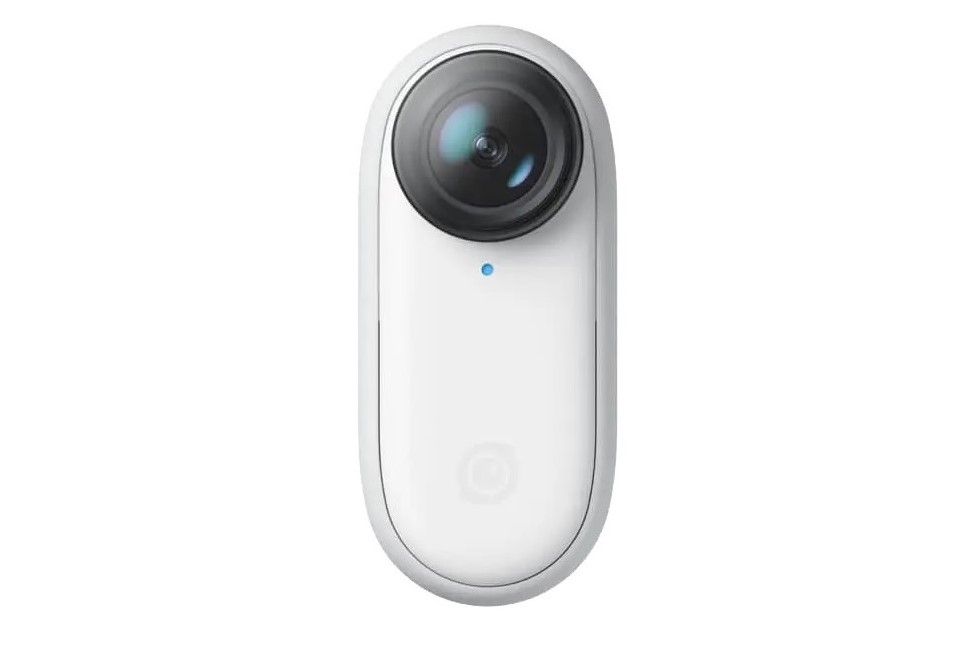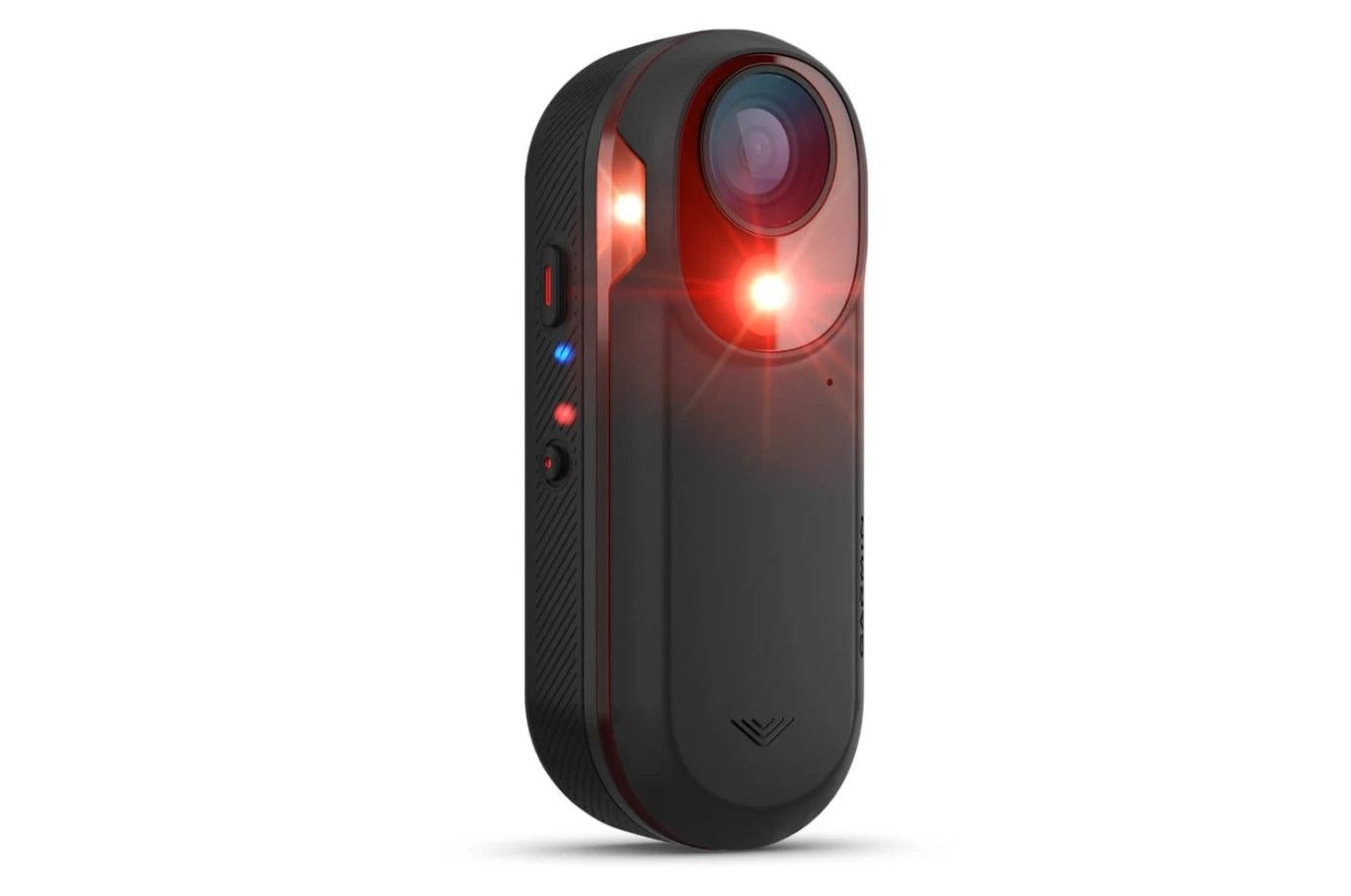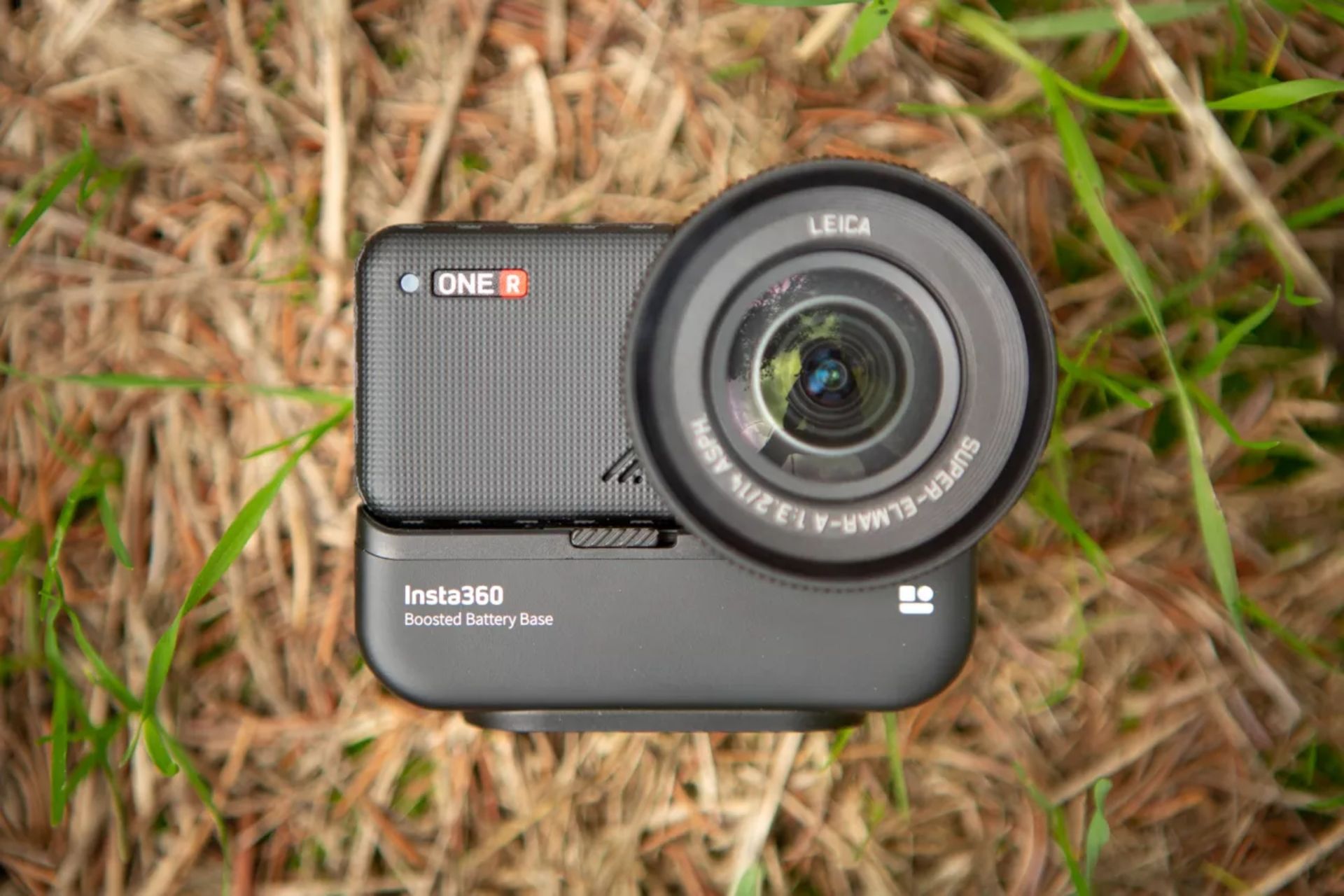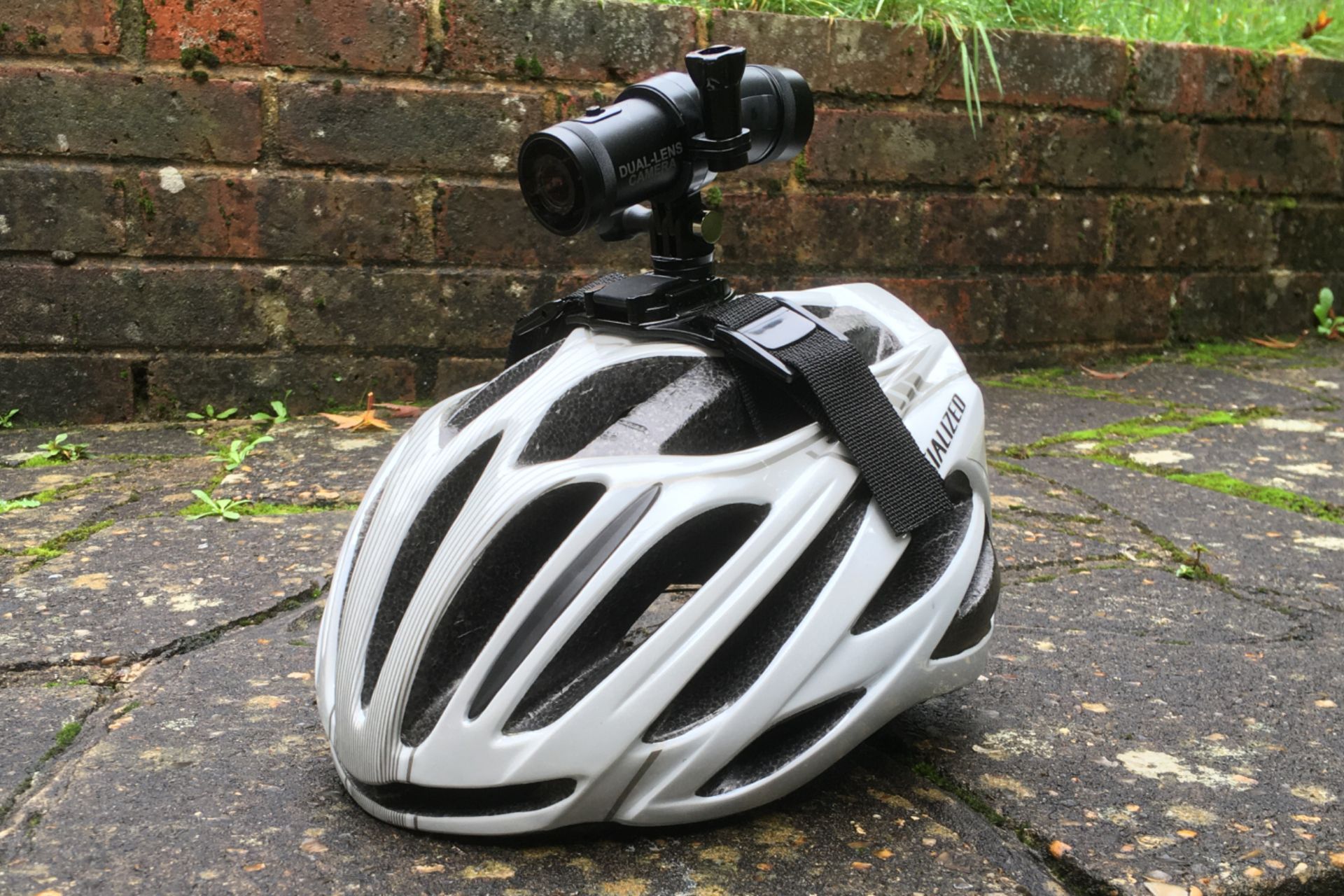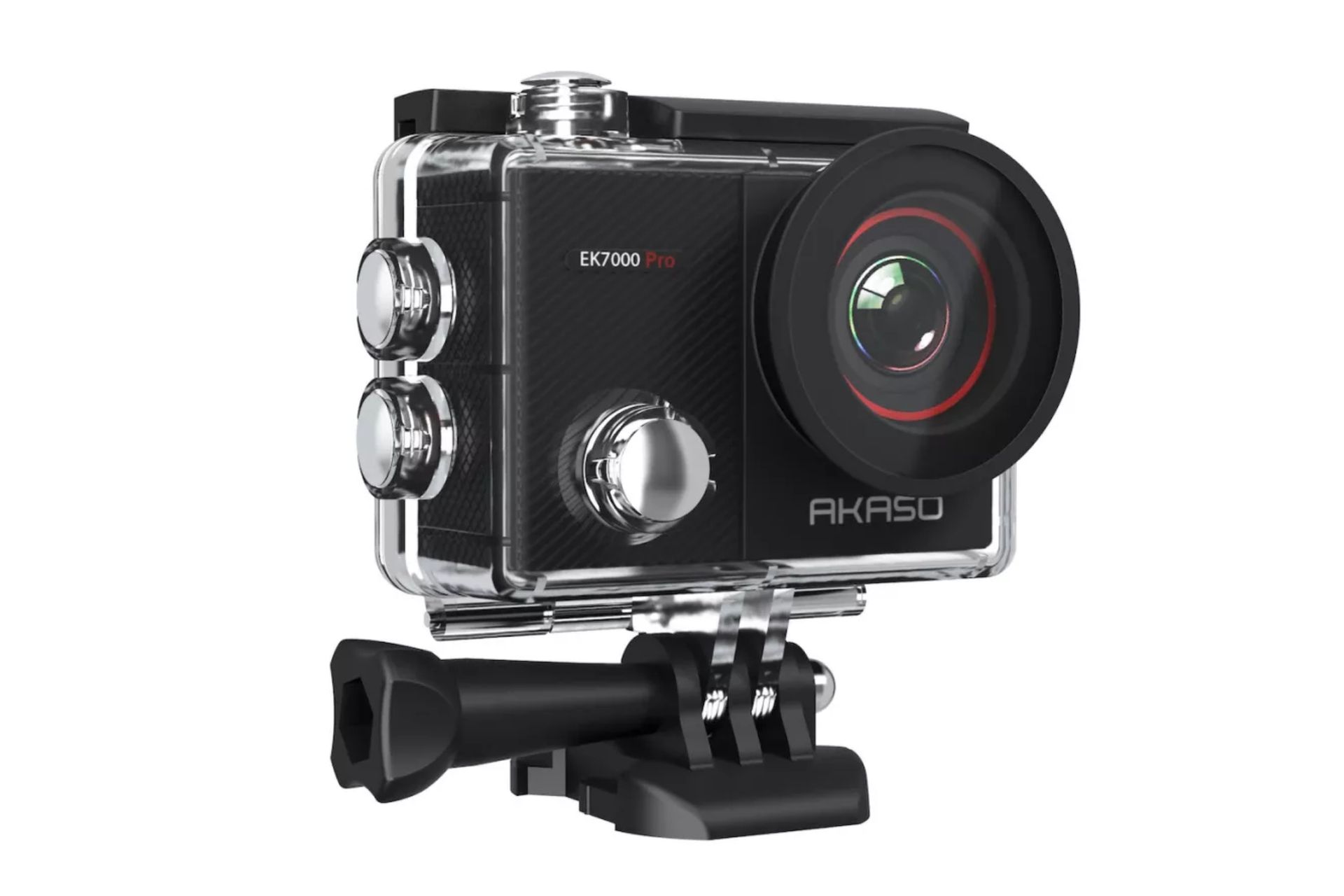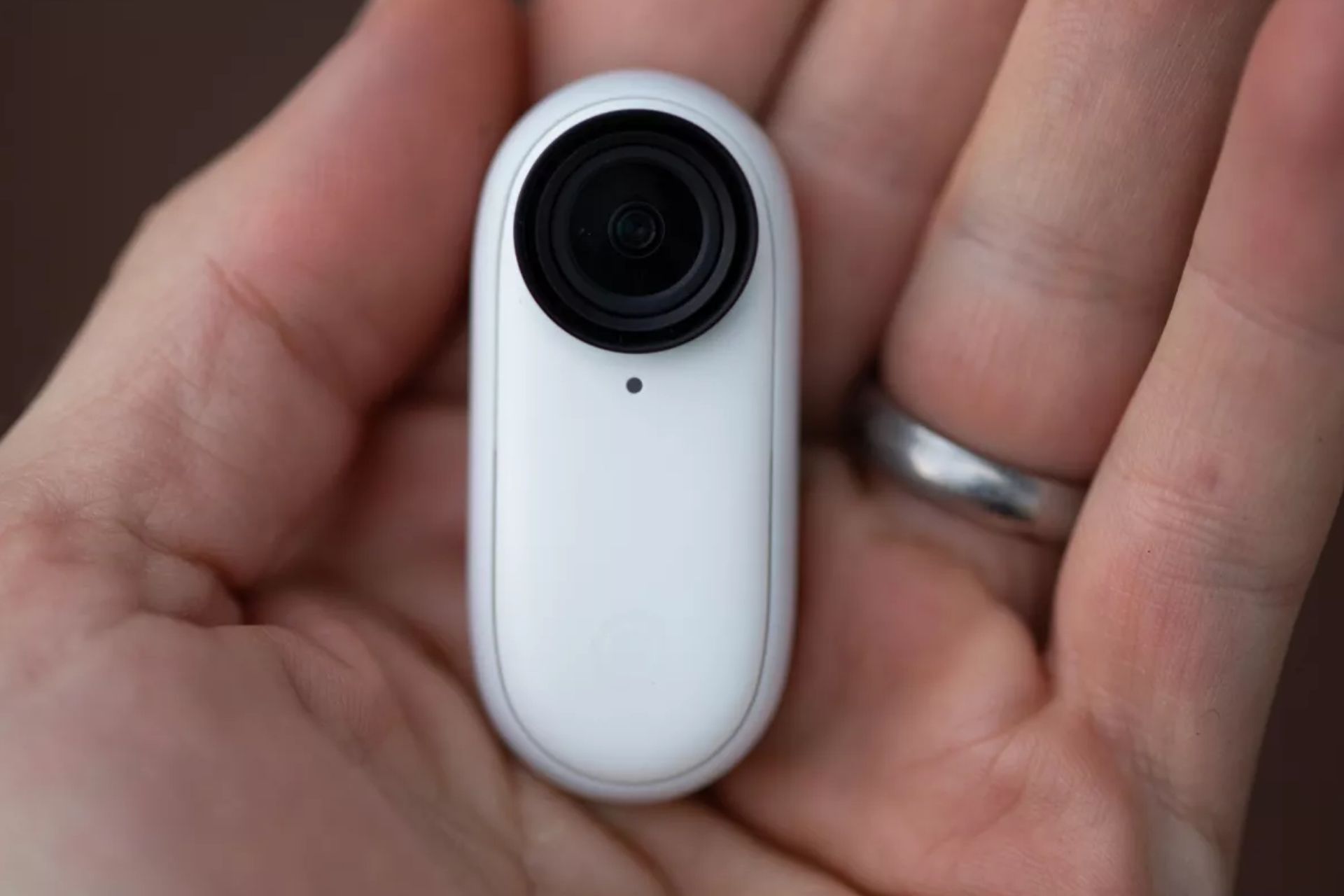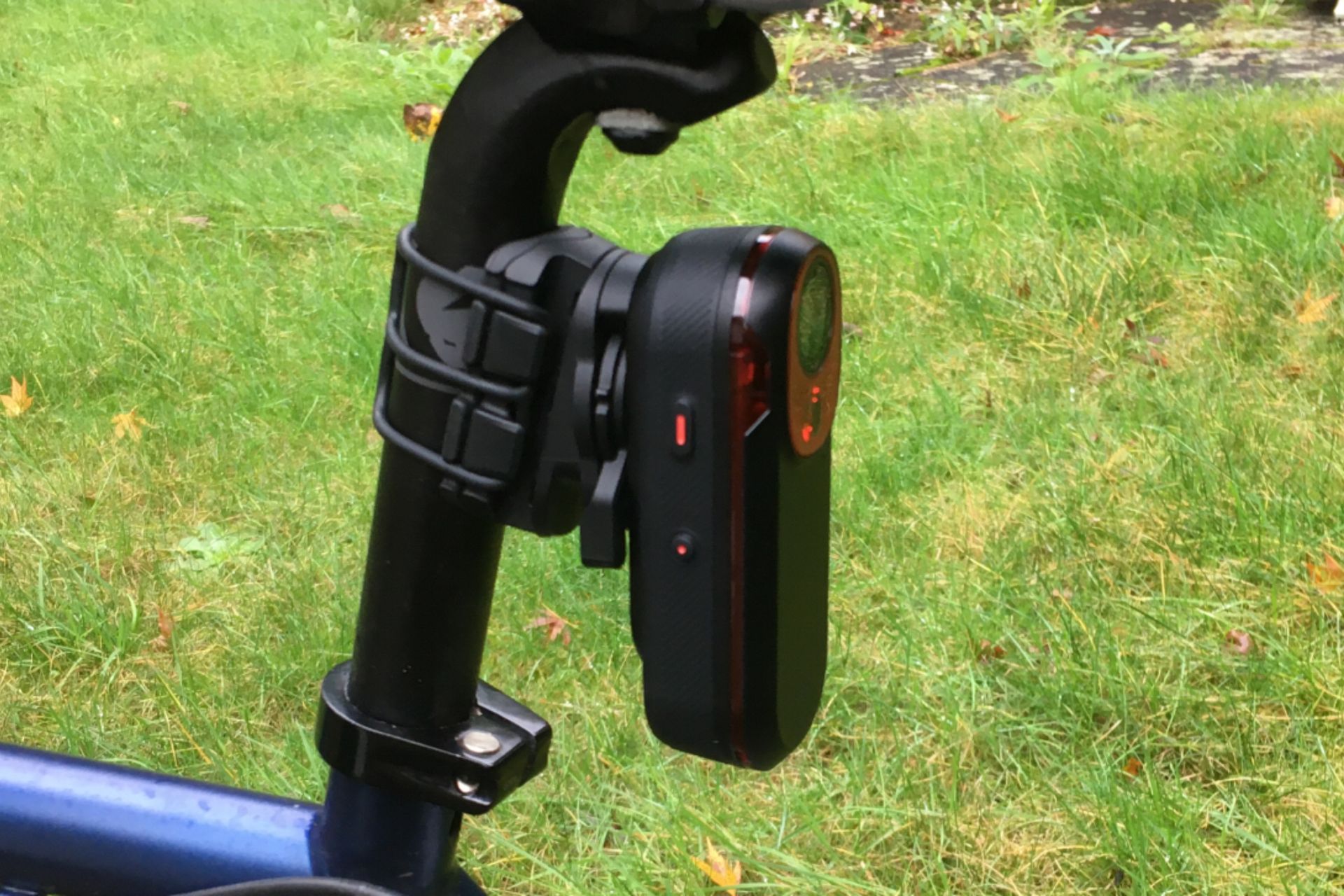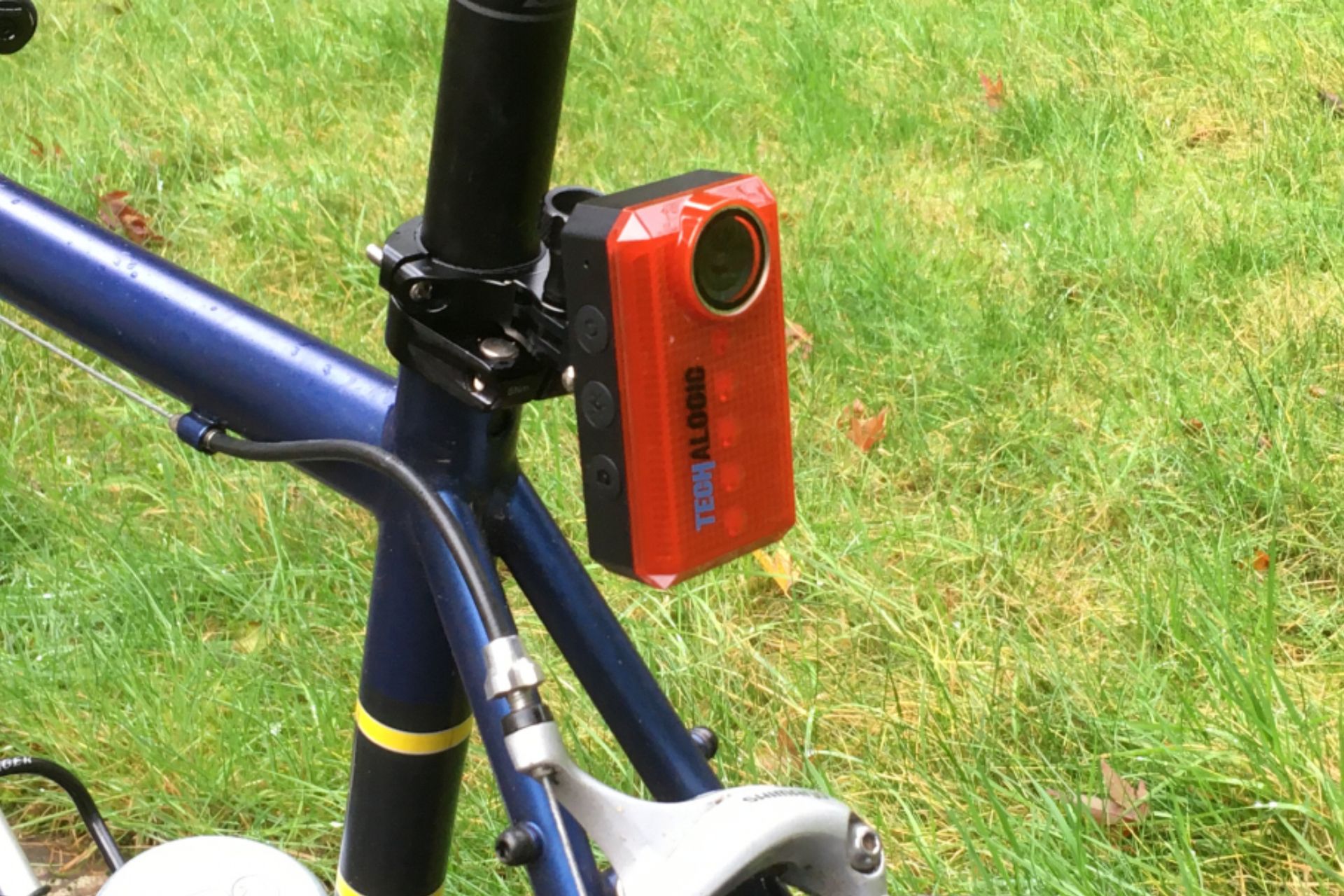Best bike and helmet cameras 2024 reviewed
Filming a great ride, or adding an extra layer of personal protection, we help you find your perfect bike or helmet camera


There are two reasons primarily for investing in one of the best bike cameras. The first is to capture your rides, allowing you to share your ascent of Alpe d’Huez, Box Hill or anywhere else for that matter with your cycling friends.
The second is far less cheery but important nonetheless. In a similar fashion to a car dash cam, a bike camera can capture footage from road accidents, enabling the user to submit the evidence to the police.
Whether you’re an aspiring YouTuber or a regular commuter looking to record your daily journeys, there’s a bike camera for you. We’ve tested a variety enabling us to create this guide featuring some of the best performers.
If, after reading all the reviews, you’re still unsure of the right bike cameras for you then we’ve also included many helpful hints and tips, which you'll find after the main testing and product reviews section. Here we look at the factors you’ll need to consider, including battery life, storage capabilities, picture quality and more.
The quick list
Best overall
Not only is it tiny, but the Go 2 is incredibly versatile. You can stand it up, hook it to your bike or wear it via its magnetic clip, letting you take a variety of images to record your ride from different angles.
Best rear mount
More than just an action camera, the Garmin Varia RCT715 also includes a taillight and a radar detector that alerts you to vehicles approaching from behind, giving you video footage and upping your safety in one package.
Best image quality
GoPro cameras still set the benchmark for footage and image. The Hero11 has impressive image stabilisation and can even fix the horizon so it stays at the same place in the shot. The battery is designed to work in the cold.
Best modular camera
The modular design of the Insta360 One R means that you can spec it exactly as you want, with a choice of lenses, batteries and more. It works as well as a GoPro, but with a lot more features.
Best dual camera
The Techalogic camera takes both forward and rear-facing footage simultaneously and mounts to your helmet. The image quality is fine for evidence and the battery will last for 2.5 hours. of loop recording.
Best budget camera
Akaso packages up its camera with loads of accessories in a budget-priced bundle which even includes a remote. You can shoot in up to 4k definition, although image quality isn't quite up to that of pricier options.
Best bike and helmet cameras: Our picks
Best overall
The Insta360 Go 2 is both small and light
Specifications
Reasons to buy
Reasons to avoid
The hardest thing about the Insta360 Go 2 Action Camera is deciding what it's not the best at, as it easily tops the charts for lightest, smallest and easiest to use, hence it maxing out as the best bike camera all round.
Likening it to the size of wireless earbuds in a charging case, the Insta360 Go 2 Action Camera really is small. The actual camera is about half this size, but as the case acts as a charge and stand, it makes sense to always use it.
The controls and screen are minimal, just a setting option, but the app allowed us to double-check live images, so we could get just the right angle.
There's an overwhelming array of resolutions and image options, it's a case of playing around with it until you see what you like, it's that easy!
The other real perk is the mounting options, with three as standard. A pivot stand, a clip mount and a magnetic pendent. They add lots of versatility to your footage angles, although the magnetic pendant probably wouldn't hold out over super rough movement.
We found the editing software simple to use, but with no 4k recording option, it's not as high quality as some of the other options on the market, such as the GoPro camera family, and the factory standard case isn't waterproof (although the camera is).
There's no loop recording setting, however, so this not the one for you if you're looking for additional on-the-road security.
Easy to grab and go, make home edits and share with family and friends, you can even decorate its gloss white exterior with a funky stick on skin making it a great camera to capture great riding memories on.
"It allows you to relax and enjoy the ride while also sharing it with others." Josh Ross, Cycling Weekly.
Read more: Insta360 Go 2 Action Camera full review
Best rear mount
Garmin Varia works as both bike light, radar and camera
Specifications
Reasons to buy
Reasons to avoid
The Varia RCT715 is the top-of-the-range integrated rear light, camera and radar unit from Garmin (the RTL515 and RVR315 both sit below it). It links to either a cycling computer, such as the Garmin Edge 530, or your smartphone to keep you informed about the traffic situation behind you – courtesy of its radar-sensing capabilities.
The road behind can be filmed for evidential use should an incident arise, and it has a G sensor to automatically save footage in the event of an accident. The rear light has four modes as well as automatically changing its behaviour when a car approaches from behind to alert the driver further.
The unit feels well made in the hand and, although the seat post bracket is a little fiddly to fit, it felt secure once on the bike with a positive click from the locking lever. It is weatherproofed to an IXP7 rating and didn't allow water in on wet rides.
The camera films at a good quality (1080p), with our tester finding that car number plates are clearly visible. Night filming is respectably good, too, although number plates tend to be harder to read with their reflective backing shining back and obscuring the letters and numbers more often. The Varia RCT715 does overwrite older footage as it records in a loop, but you can lock a section of film to keep it safe, too. The microphone picks up ambient noise as well as a clicking freewheel but struggles to record your voice. So if you were giving a commentary about unfolding events it'd probably be lost.
The light is decent, it isn't as good as my benchmark lights, but our tester didn't feel underlit. He did like the integration of the three functions in the one unit though. However the revelation is the radar. Our tester was surprised at how quickly he came to rely on its information. Even riding buddies now rely on the tritone bleep as a car approaches from behind. It tells you their distance, how many are following you and even if they are going fast. Cycling Weekly's Paul Grele says - "I have been massively impressed with the radar"
Read more: Garmin Varia RCT715 rear light and bike camera full review
Best image quality
The GoPro Hero11 is often imitated but rarely matched
3. GoPro HERO11 Black
Specifications
Reasons to buy
Reasons to avoid
GoPro is synonymous with action cameras and has built up a reputation for producing some of the best action cameras on the market. The GoPro Hero11 Black is its latest model.
If you're looking for an all-encompassing bike or helmet camera, the Hero11 Black is a good place to start and stop your search. Using a similar format to previous iterations, the Hero11 Black is small enough to fit in the palm of our hand with room to spare. Weighing just 154g, you'd be forgiven for thinking that it's a rather light camera but compared to some others on the market, it's not the lightest.
That is forgivable though when you see the features packed into it. The Hero11 Black has done away with needing a waterproof case, integrating the waterproofing into the actual unit itself. Combine that with 5.3K shooting quality and you have a camera that can shoot anything, anywhere, straight out of the box, with even a live stream option available.
When it comes to mounting the GoPro, there's an abundance of choices out there from attaching it to your helmet to your handlebars and even your chest via a harness. Being one of the first action cameras on the market GoPro has cultivated its range of mounts so there's something for everything.
It's not the cheapest of cameras though. If you are starting out or just want something for back-up on the road in case there's an incident, you'll probably be better off with one of the cheaper Akaso EK7000 Pro action cameras, but if you're a budding movie maker and want the creme de la creme, then this is the one for you.
Best modular camera
The Insta360 One R is packed with featu
Specifications
Reasons to buy
Reasons to avoid
Whereas the Insta360 Go 2 Action Camera is an amateur photographer and film maker's delight, the same goes for the Insta360 One R and more experienced users.
The modular design of the bike camera allows buyers to select exactly what they need on board thanks to a selection of choices, from lenses to storage cards, batteries to sensors, with bundle deals the best way to get all you need to get rolling as quickly as possible.
On test, we got to grips with the Insta360 One R Expert Edition Ultimate Kit. It's a bundle that includes absolutely everything you could possibly want from a bike camera, with multiple lenses and batteries, as well as a mount and even a selfie stick. We also really like that it can be programmed on a loop recording, doubling up as a road safety option as well as an action cam.
It is easily comparable with a GoPro Hero 7 function-wise but with a lot more features, making it a competitive option for anyone starting out, or looking to upgrade as it's probably quicker to get to grips with if you've had a little camera experience already.
We found that the ability to interact with the camera via your smartphone does mean that when it comes down to selecting resolutions and the final edit, it is very convenient.
According to Cycling Weekly's Josh Ross, "Insta360 isn't offering a perfect camera, but it is well built and comes with a great collection of features".
Read more: Insta360 One R full review
Best dual camera
The DC-1 is simple to use and produces quality images
Specifications
Reasons to buy
Reasons to avoid
The Techalogic DC-1 Helmet Camera features a dual camera which can film ahead and behind you at the same time providing a comprehensive view of your ride. It is primarily an evidential camera should you be unfortunate enough to be involved in an incident. The unit is IP65 water-resistant rated, which will keep the weather out nicely.
You can film in three qualities; 720P and 1080P for both cameras, as well as QHD (2K) for the front camera only. The camera uses a Micro SD card (max capacity 128Gb) and it will loop in 1, 3, 5 or 10 minute sections, automatically overwriting the oldest film. This function can be switched off too. The internal battery will last 2.5 hours using the default setup of both cameras at 1080P and 3 min looping. There is an app to allow access to the settings as well as being useful as a viewfinder while setting up. It connects your phone to the camera using WiFi.
The camera and kit come with a wide variety of helmet fixings which use the GoPro standard. Our tester used the webbing interface on a vented cycling helmet and found he had to tighten the helmet cradle up quite a lot more than usual to keep the helmet steady as - whilst the DC-1 isn't particularly heavy - you can feel the inertia from the camera because it sits quite a way off the helmet.
Our tester used the default camera settings and found they filmed well, certainly clear enough to record car number plates easily. It also worked well at night in lit streets, but struggled to show much in dark country lanes. This points to a commuter rider or primarily a daytime rider as a user.
Paul Grele's summary was "A nicely made device that pulls off a neat trick of being able to film in front and behind you at the same time. It is super simple to operate too".
Read more: Techalogic DC-1 Helmet Camera (Front and Rear Facing) full review
Best camera on a budget
The Akaso is designed for those on a budget
Specifications
Reasons to buy
Reasons to avoid
If spending hundreds on a bike camera right now isn't in the offing, then you'll be pleased to discover there is a more affordable option, that is well worth exploring.
The Akaso EK7000 Pro action camera impressed us on test, proving that it is possible to buy a bargain, without totally sacrificing performance. Clearly a nod to the GoPro brand of action cameras, notable the entry-level Hero 7, the Akaso also mirrors a few of its features too, such as stabilisation and the ability to shoot in 4k/25fps, 2.7k/30fps or 1080P/60fps modes as well as shooting 16M pixel stills.
It also allows you to flip the image (in case your mounting under your saddle) burst photo and even loop record, ideal if you are wanting to use it for dash-cam like safety.
The waterproof case comes as standard and is compatible with GoPro mounts, making it tricky for anyone other than the user to realise that it isn't one of the original adventure camera purveyor's units.
We loved the wrist mount, and the 2" touch screen, which makes it easy to select which camera feature to use and instantly watch a playback, although you can also use the Akaso app and do it all from a smart phone too.
It comes with two batteries as standard, so you can get around three hours of use if you remember to switch over mid-way.
It really is an impressive package, the only downside is that you'll still need to invest in a Micro SD card and the image isn't quite as good quality as some, but for the price, you can't get better.
Our tester, Paul Norman, concluded that it's "A good alternative to a GoPro if you want to take action footage but are put off by GoPro’s prices".
Read more: Akaso EK7000 Pro action camera
Techalogic's CR-1 is both camera and rear light in one
Specifications
Reasons to buy
Reasons to avoid
The Techalogic CR-1 is a rear light and camera in one compact unit. Measuring 80mm x 47mm x 27mm, it isn't even much larger than some ordinary rear lights. The camera allows you to record events from behind you with a 120° window all in 1080p quality. The light itself has six modes of operation, ranging from a solid 'on' option to a variety of flashing modes.
Although you can operate it solely using the buttons on the side of the unit, (once you've formatted the memory card before first use) there is the RICAM app to allow access to settings - as well as being able to see the camera in action. This can help with getting the best setup view on your bike.
The camera/light uses GoPro fixings which, while versatile, are a bit of a faff if you're constantly removing the unit when locking your bike up. The CR-1 is IPX5 water resistant, which means that spray from the road shouldn't be a problem.
Filming in the daytime, we got a clear vision of the road behind and the quality is good enough to read car number plates and it can also add a time and date stamp to the film. Essentially, it is good enough for evidential purposes and that is what this unit is primarily designed for - just don’t expect to use it for cutting together ‘edits’ of your rides.
Filming at night - and with street lighting - you can still read number plates, but the camera did struggle to show much detail in really dark country lanes. We'd suggest that it is most suitable for city commuters or daytime riders, and as our tester writes, "it is hard to argue with the CR-1's value for money".
Read more: Techalogic CR-1 rear light and bike camera full review
Meet the testers
Josh hails from the Pacific Northwest but would prefer riding through the desert than the rain. He will happily talk for hours about the minutia of cycling tech but also has an understanding that most people just want things to work. He likes to document his rides and always takes an action camera with him to capture footage to edit and share and has used a wide range of cameras, so knows what works and what doesn't.
Paul reviews both bikes and equipment for Cycling Weekly and has 40 years of riding under his belt across a variety of disciplines including road riding, commuting, a self-supported Land's End to John o' Groats trip, XC mountain biking and several Polaris Challenge two-day events. Naturally for a reviewer he loves bike and kit design and has even fillet brazed a couple of framesets himself. He's out riding in all conditions, usually with an action camera strapped to his bike to capture his rides.
Advice
What should I look for in a cycling safety camera?
Unfortunately near misses, incidents and even attacks can happen anywhere while out riding. Having video evidence of these unwelcomed occurrences is becoming more commonplace as police increasingly recognise the importance of providing valuable evidence to help them take positive action or even convict other road users of dangerous driving or assault.
The good news is that the best bike cameras for this level of use are much more affordable than they used to be.
To get the dash cam-like option, look for cameras that have a 'Loop Recording' setting. This will passively record your ride throughout its duration / the period of the camera battery life, constantly overwriting, until you select 'archive'.
The most important thing to look for in a Loop Recording camera is how instinctive the ability to archive a recording is, especially once you have adrenaline coursing through you and everything becomes pretty chaotic in the aftermath of an incident.
Ideally, there should just be a one-press archive record button on the camera, but anything more than two will become too complicated in the heat of the moment.
If you're not too tech savvy, also look for the ease of getting the footage off the camera, formatted, saved and sent on to the authorities. It might be worth spending a little more on a camera that comes with a smartphone app, which will render the video into a usable format automatically and allow you to save to your camera reel and share.
Always do a few test recordings and savings before heading out on the road as the last thing you want to do is somehow delete the recording rather than save and share it .
Where should I mount my camera?
Most of the population of cyclists opt for either a helmet or bike mount for their camera. There is a third option of a chest mount, but in general, these are the preserve of mountain bike riders who need to keep the camera close to their chest when participating in a more dynamic style of riding.
There are pros and cons to both options, it all depends on what suits you the most.
A bike camera helmet mount will capture a very similar view as to what the actual rider sees, which can be pretty cool for shooting a bike ride film or taking stills from it if you see something to the side that you wouldn't have captured if the camera was mounted front or rear.
From a security aspect, a helmet mount also keeps the camera with you (assuming you take your helmet inside at a cafe stop).
Safety-wise, as mentioned above, it captures what you see, so if there's an altercation between you and say a car driver, or if you have the unfortunate experience of an incident that takes you away from your bike it could offer good footage evidence.
The downside is the additional weight it adds, which doesn't need to be a lot before your neck starts feeling the strain. Unless it works on voice or another form of remote control it will challenging to function and impossible to know when the battery needs swopping/ or the storage is full (or if you're anything like us, constantly doubting yourself as to whether or not you switched it on will drive you potty taking your helmet on and off to double check)
If you do want to opt for a helmet-mounted bike camera, just ensure it's compatible with your helmet. Vented helmets are straightforward with the use of Velcro straps or elastic bands, but if you have a smooth lid with no vents, you might need to look for suction cups or a whole helmet band.
Mounting a bike camera on your bike can be one of the easiest ways to get going. There are several different mounting positions to pick from, and in general, the mounts will come with the camera, although you might need to invest in a waterproof case to be on the safe side.
Going with a forward-facing angle not only gives you a few positions to choose from, on top or under bars, and even on the top cap as shown in the above image, but a camera out front makes for simple operating, with everything in vision and settings options in easy reach.
If you go with a rear-mounted option on your bike, you'll have to spend a little more time ensuring you have the correct function set and that it is on and recording. It's also worthwhile reaching down to give the lens a little clean now and then to clear away any water or grime.
Whatever option you choose, make sure that there is a quick-release function so you can grab your camera when you are off the bike.
If you are using a bike-mounted camera for safety reasons, then always make sure the lens is clear and that the field of view isn't obstructed by your hands or panniers. You also might need to consider space on the bike for the additional technology of computers and lights.
Does a better picture quality mean less recording time?
When it comes to the best bike cameras quality and quantity have a lot in common. The higher the picture quality the shorter the video. This does of course all depend on the onboard memory of the camera, or more likely the size of the micro SDcard that you pair it with.
Even the most basic camera will have a high-definition recording setting nowadays as standard. However, many now come with 4K, which creates images that are four times sharper than HD and it's becoming a standard benchmark for higher-quality cameras.
If you want to get the clearest image possible this is the way to go. HD is still a solid video quality and thanks to progression in technology you'll be able to record in HD for much longer than previous action cameras.
When it comes to safety-only cameras, having the highest quality will be less of a priority over a longer battery run time, although you need to ensure it's still good enough to be able to use as evidence should the occasion arise.
If you're wondering what the best SD card to get to get the most out of your bike camera, then the Projectgo.pro website has a really useful resource tool. It's aimed at the GoPro family of action cameras, but the information on what SD card size to choose from is still helpful.
Do bike cameras connect wirelessly?
Plugging things in with actual wires is becoming less and less common, with many cameras opting to have built-in WiFi connection among others. This lets you transfer files to your phone or computer wirelessly with relative ease.
Other connections may include ANT+ or Bluetooth which allow you to connect your cycling computer, heart rate monitor or even power meter to make those videos look even more professional.
Do bike cameras use apps?
All of the products that feature in our best bike camera buyers guide use an iOS or Android app, which makes it much easier to get to grips with selecting settings and functions over a complicated sequence of button pressing.
If the camera you have comes with a screen, then it can be a great feature as they can allow you to see the footage as you record it much like a viewfinder. This is perfect if you want to make more serious videos of your riding or general adventures.
Otherwise, cameras without screens rely on you seeing the footage after you've filmed it and uploaded it to your computer or phone. However, if you're just using it for commuting and insurance purposes, screens are more of a bonus than a necessity.
Do bike cameras have built-in editing software?
With their own apps or landing platforms often comes easy-to-use editing software. This is great if you want to do some video editing on the move, or are just dabbling with making your films and don't want anything overly complicated, e.g. if you just want to share footage of an incident.
MP4 or MOV files are probably the easiest to process video-wise, while a ready-to-use JPG photograph is super easy to share immediately.
How we test
We're riders first and foremost here at Cycling Weekly, so you can be sure that any camera reviewed here has been used comprehensively on both road bikes and gravel bikes. That means that we've thoroughly tested the resolution and image stabilisation. We'll also have made sure that battery life and storage meet the maker's specifications. Often, we'll have used the cameras in adverse weather or dusty conditions too.
Back home, we will have tested any editing software that comes with the camera, its usability and its ability to produce a quality edit from our raw footage.
So you can be sure that these action cameras hit the mark for functionality and usability when riding.
Get The Leadout Newsletter
The latest race content, interviews, features, reviews and expert buying guides, direct to your inbox!
Paul started writing for Cycling Weekly in 2015, covering cycling tech, new bikes and product testing. Since then, he’s reviewed hundreds of bikes and thousands of other pieces of cycling equipment for the magazine and the Cycling Weekly website.
He’s been cycling for a lot longer than that though and his travels by bike have taken him all around Europe and to California. He’s been riding gravel since before gravel bikes existed too, riding a cyclocross bike through the Chilterns and along the South Downs.
- Sonny EvansWriter
-
 Anne-Marije Rook's 2024 Gear of the Year: from the best brakes on the market to great earbuds and a statement t-shirt
Anne-Marije Rook's 2024 Gear of the Year: from the best brakes on the market to great earbuds and a statement t-shirtIn 2024, I fell back in love with road riding and witnessed women’s sports make history time and again
By Anne-Marije Rook Published
-
 'Anything can happen': Our men's rider of the year Joe Blackmore looks back on a stellar 2024 and weighs up his future
'Anything can happen': Our men's rider of the year Joe Blackmore looks back on a stellar 2024 and weighs up his futureThe Londoner tells Cycling Weekly about his hopes for next season, his sporting heroes, and how he plans to walk the tightrope between on road and off
By James Shrubsall Published
